Contact the coordinator at CT-coord@neara.org.
Eastern Connecticut is the historic home of the Pequots (Mohegans), who migrated there from the Hudson River Valley shortly before the arrival of Europeans. Mohegan legends are full of stories of the Little People, good spirits who must be treated with respect. Some of the many small chambers and stone niches that dot the countryside may be the homes of the Little People. Moshup the giant also left his mark in the many stones strewn about the state. Lantern Hill, a shining quartz outcropping, also had special meaning to the Indians and is known to have served as a lookout for the Pequot chief Saccacus.
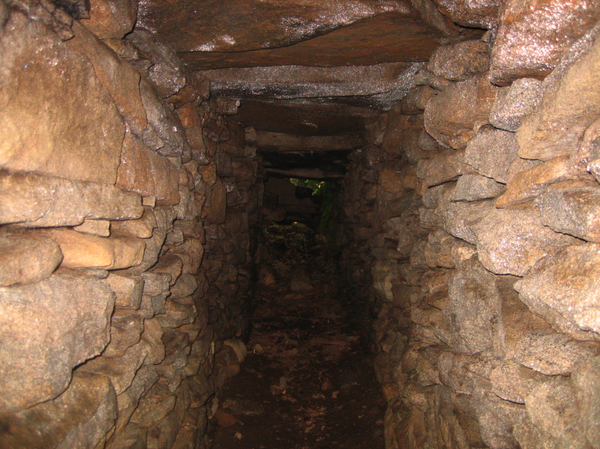
This narrow, slab roofed chamber extends over thirty feet into a hillside. With an entrance only 22 inches square, much of its length requires crawling on hands and knees. Mavor and Dix considered both European and Native American origins. Finding no solar or lunar alignments, they suggest that its termination in the bedrock might indicate a Native American structure designed to “connect people with the Earth manitou (spirit).
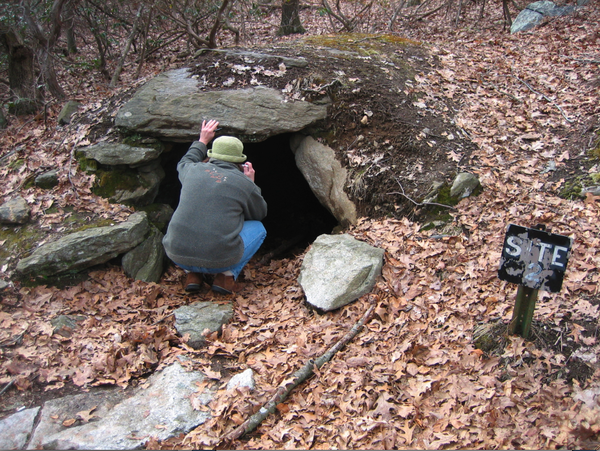
The Gungywamp complex is an odd collection of stone features running the gamut from prehistoric rock shelter to post-colonial fireplace. How the small “beehive” chambers, a row of flat standing stones and a possible grinding site composed of concentric stone rings fit it to the time sequence, however, is anyone’s guess. Some have cited indentations in a boulder resembling the Christian “chi rho” symbols and equinox light effects through a chamber window as evidence for a Celtic connection, but these features could also be natural or accidental.
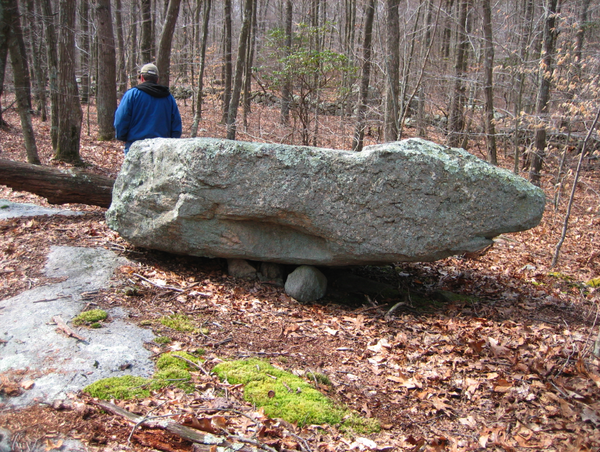
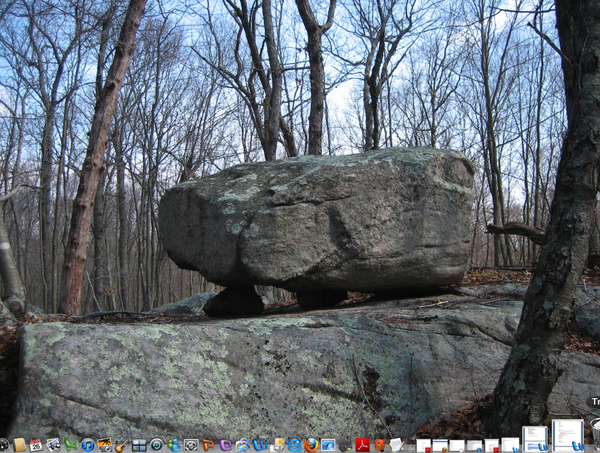
A number of propped boulders, many resembling animal forms, have led to speculation that there was more than glacial action involved in placing these boulders where they currently lie.
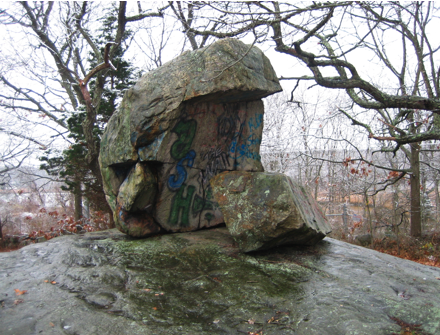
Pulpit rock sits on the highest knoll in the area. Its name suggests its use by the early Christian settlers but it may well have been a sacred site long before they arrived. Unfortunately, graffiti mars its appearance today. There is a “weathering hole” on the right side of the front of the stone.